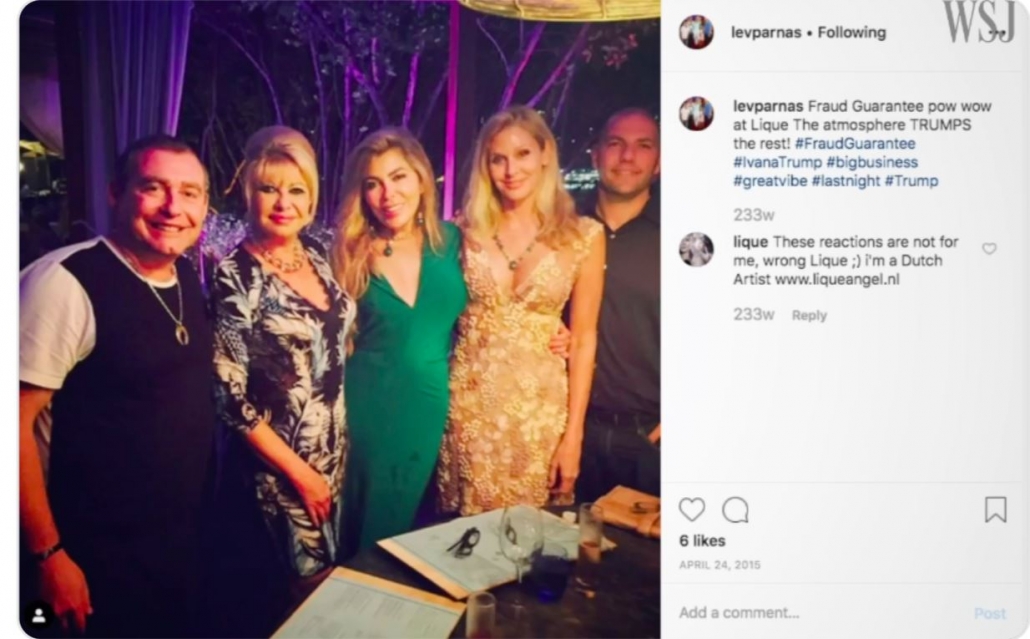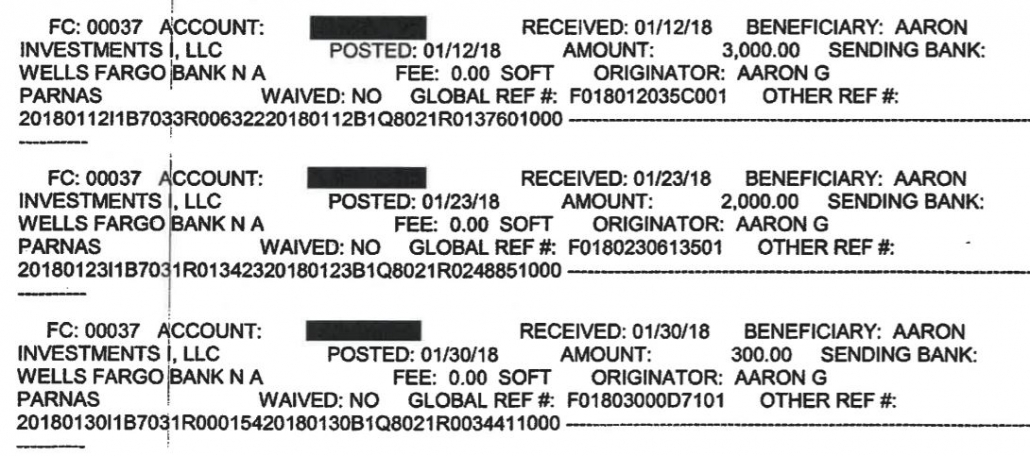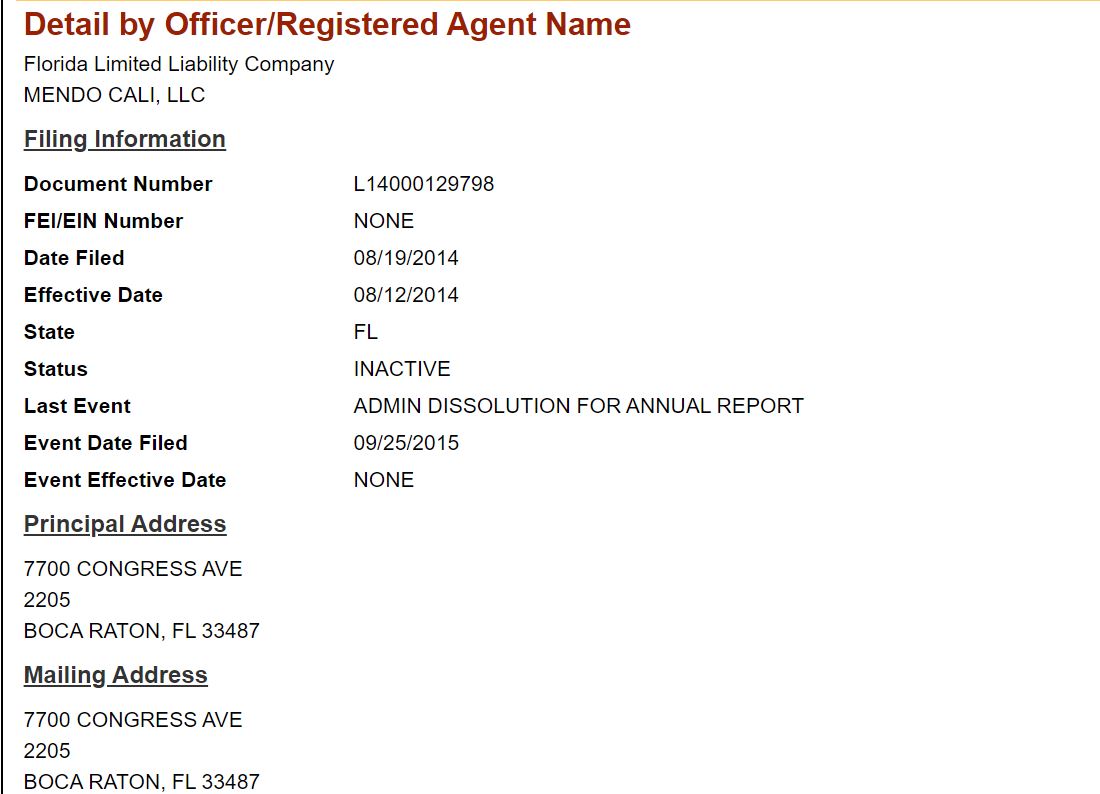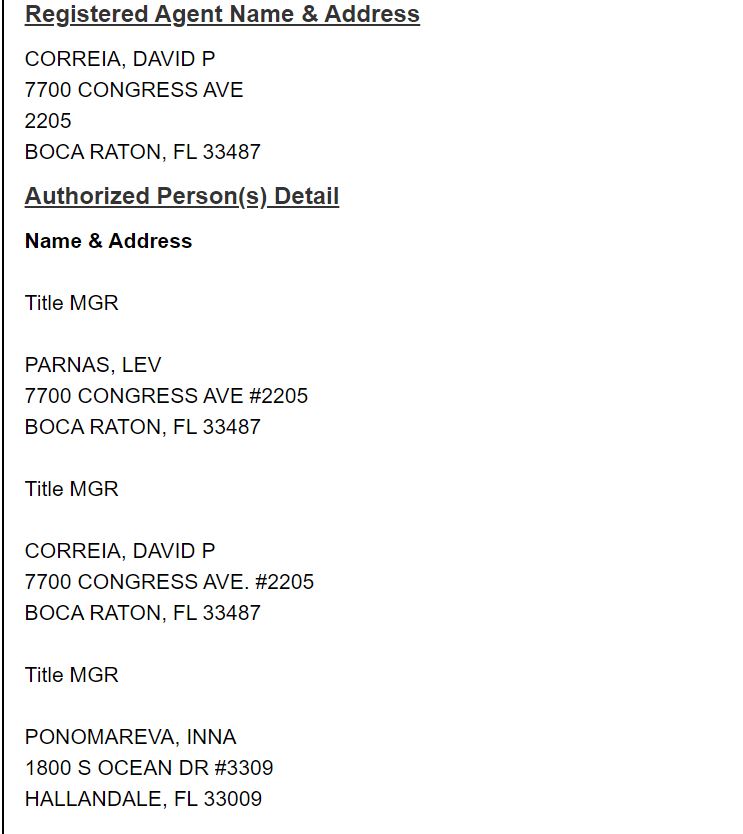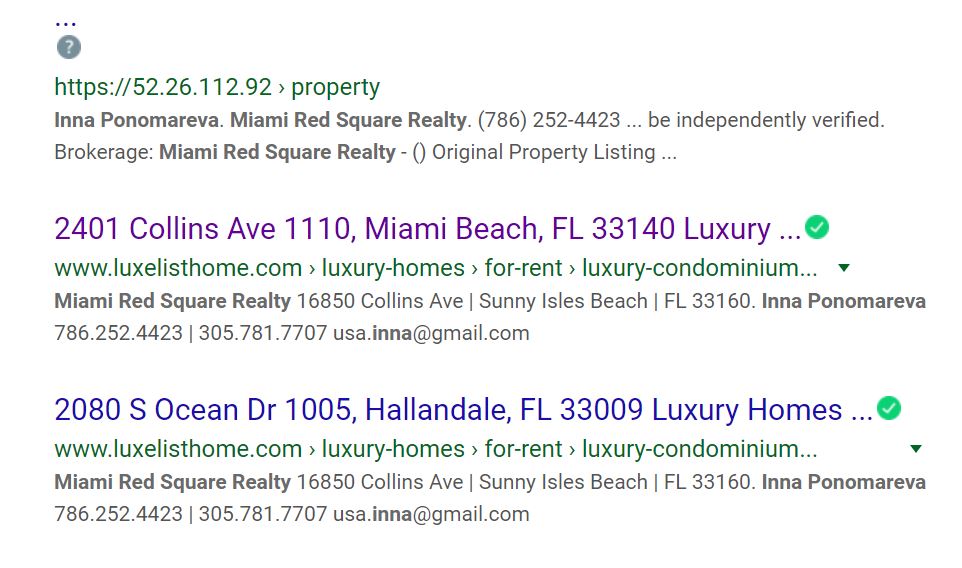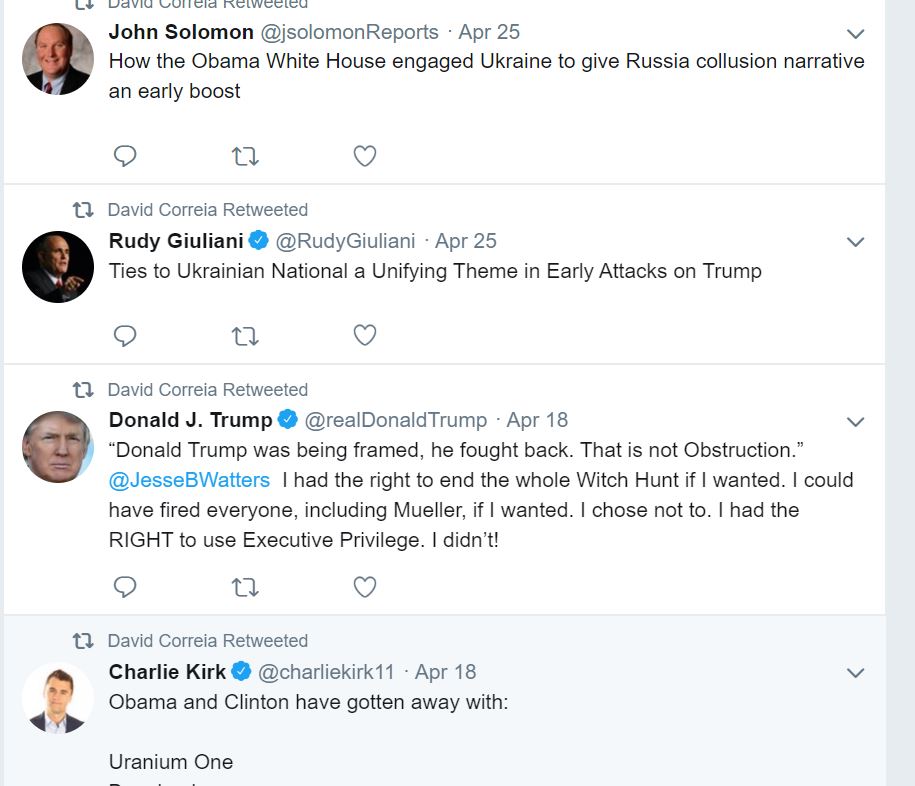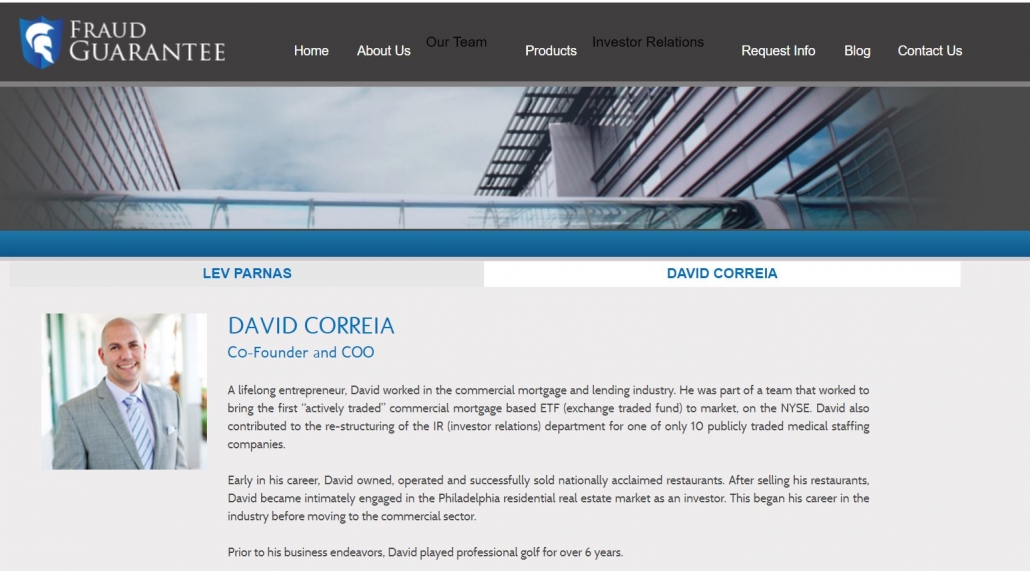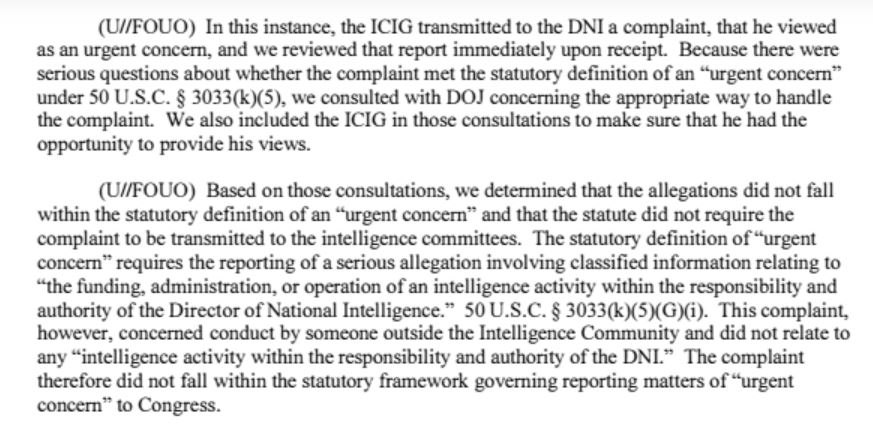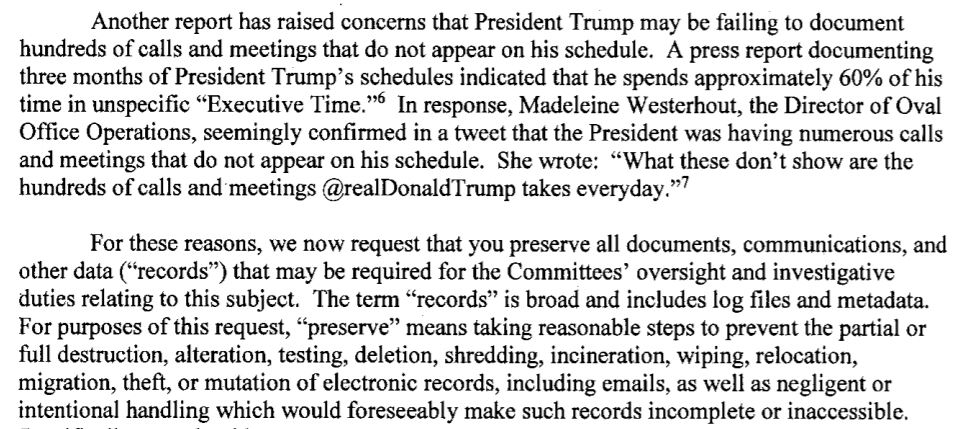Jim again here.
See update below.
Over the past few days, several sources of information about Lev Parnas’ history have come out. Perhaps the most complete picture of his early years came from this New Yorker interview shortly before his arrest:
Parnas was born in February, 1972, in the port city of Odessa, in southwestern Ukraine, which was then part of the Soviet Union. He was three when his family moved to the United States. “I came here as a legal immigrant, through a legal process,” he said. His family settled in Detroit, where they lived for about a year, before relocating to Brooklyn. When Parnas was sixteen, he worked at Kings Highway Realty, selling Trump Organization co-ops. “That was my first time knowing who Trump was, but, growing up in that area, you knew who Trump was, because his name was all over the place,” he said.
In 1995, when Parnas was twenty-three, he moved from Brooklyn to Florida.
I found the part about Kings Highway Realty and Trump co-ops especially useful, as I had been puzzled about one of the earlier passages from an interview with the Washington Post:
Parnas, 47, was born in Ukraine but moved with his family to the United States as a child and grew up in Brooklyn. He told The Washington Post in an interview conducted before his arrest that he got his start in real estate, selling Trump condos for Donald Trump’s father, Fred, then worked in shipping in the former Soviet Union before becoming a securities trader. He moved to Florida in the mid-1990s.
This passage had bothered me, because when we go back and look at Fred Trump’s career, condos play virtually no role. Fred built large, pedestrian apartment buildings, often with government assistance, in the outer boroughs that he retained ownership of and rented out to the middle class. Donald, as we know, concentrated early on opulent properties in Manhattan.
The one Fred Trump property that bears the Trump name is Trump Village:
The seven towers of Trump Village were designed by the architect Morris Lapidus. The two near Ocean Parkway were rental buildings and were run by the Trump Organization until recent years. The five other buildings were in the state’s Mitchell-Lama program, which allows people with incomes below certain thresholds to enter lotteries for the right to buy co-op apartments at below-market prices.
The snippet above was published in the New York Times in 2010. That begins to resolve some of the apparent discrepancies in the Parnas statements in the different interviews. If he was selling property for Fred Trump, co-ops in Trump Village make the most sense. And by this time, the Trump Organization was managing the properties as Fred’s health was starting to decline.
Remarkably, Kings Highway Realty Corp., which was incorporated in 1977, is still in business. The address listed for it now is around 8 miles from Trump Village. That seems to fit with a first job for a 16-year-old growing up in Brooklyn, although selling real estate at 16 seems pretty advanced. Further, as we see in Fred Trump’s obituary, he had a history of taking in young men looking for a career in real estate.
By the time Parnas started selling co-ops at Trump Village, Fred Trump was 82. The obituary suggests that Alzheimers set in around 1993, five years after Parnas started, but there appears to have been a single driving force in Fred’s life in this era:
Fred Trump’s real estate empire was not just scores of apartment buildings. It was also a mountain of cash, tens of millions of dollars in profits building up inside his businesses, banking records show. In one six-year span, from 1988 through 1993, Fred Trump reported $109.7 million in total income, now equivalent to $210.7 million. It was not unusual for tens of millions in Treasury bills and certificates of deposit to flow through his personal bank accounts each month.
Fred Trump was relentless and creative in finding ways to channel this wealth to his children. He made Donald not just his salaried employee but also his property manager, landlord, banker and consultant. He gave him loan after loan, many never repaid. He provided money for his car, money for his employees, money to buy stocks, money for his first Manhattan offices and money to renovate those offices. He gave him three trust funds. He gave him shares in multiple partnerships. He gave him $10,000 Christmas checks. He gave him laundry revenue from his buildings.
Much of his giving was structured to sidestep gift and inheritance taxes using methods tax experts described to The Times as improper or possibly illegal. Although Fred Trump became wealthy with help from federal housing subsidies, he insisted that it was manifestly unfair for the government to tax his fortune as it passed to his children. When he was in his 80s and beginning to slide into dementia, evading gift and estate taxes became a family affair, with Donald Trump playing a crucial role, interviews and newly obtained documents show.
So at the very time that Parnas came onto the scene, Fred was already slipping into dementia but singularly focused on channeling as much money as he could to Donald while avoiding taxes on the transfers. Did Parnas see these schemes as they developed? Did he even perhaps play a bit role? Recall that in one of the interviews he says he worked for the Trump Organization. The ultimate vehicle for funneling cash to Fred’s offspring came into being in 1992, and likely postdated Parnas’ time with Trump Village, but we have to wonder if Parnas saw the seeds of this one being planted, or was even one of the employees used in the scheme. Continuing in the Times article above:
The most overt fraud was All County Building Supply & Maintenance, a company formed by the Trump family in 1992. All County’s ostensible purpose was to be the purchasing agent for Fred Trump’s buildings, buying everything from boilers to cleaning supplies. It did no such thing, records and interviews show. Instead All County siphoned millions of dollars from Fred Trump’s empire by simply marking up purchases already made by his employees. Those millions, effectively untaxed gifts, then flowed to All County’s owners — Donald Trump, his siblings and a cousin. Fred Trump then used the padded All County receipts to justify bigger rent increases for thousands of tenants.
Something Parnas almost certainly had to have seen just before going to work with the Trump Organization was the story of David Bogatin, one of the first Russian purchasers of a Donald Trump property:
But Bogatin wasn’t deterred by the limited availability or the sky-high prices. The Russian plunked down $6 million to buy not one or two, but five luxury condos. The big check apparently caught the attention of the owner. According to Wayne Barrett, who investigated the deal for the Village Voice, Trump personally attended the closing, along with Bogatin.
/snip/
In 1987, just three years after he attended the closing with Trump, Bogatin pleaded guilty to taking part in a massive gasoline-bootlegging scheme with Russian mobsters. After he fled the country, the government seized his five condos at Trump Tower, saying that he had purchased them to “launder money, to shelter and hide assets.” A Senate investigation into organized crime later revealed that Bogatin was a leading figure in the Russian mob in New York. His family ties, in fact, led straight to the top: His brother ran a $150 million stock scam with none other than Semion Mogilevich, whom the FBI considers the “boss of bosses” of the Russian mafia. At the time, Mogilevich—feared even by his fellow gangsters as “the most powerful mobster in the world”—was expanding his multibillion-dollar international criminal syndicate into America.
How could that not have made an impression on Parnas, going to work just months after the Bogatin story exploded?
This leads us to a murky intermediary period in Parnas’ story. Note that the Post interview, but not the New Yorker interview, mentions that he “worked in shipping in the former Soviet Union”. Also, this biography he eventually put on the Fraud Guarantee website mentions something similar:
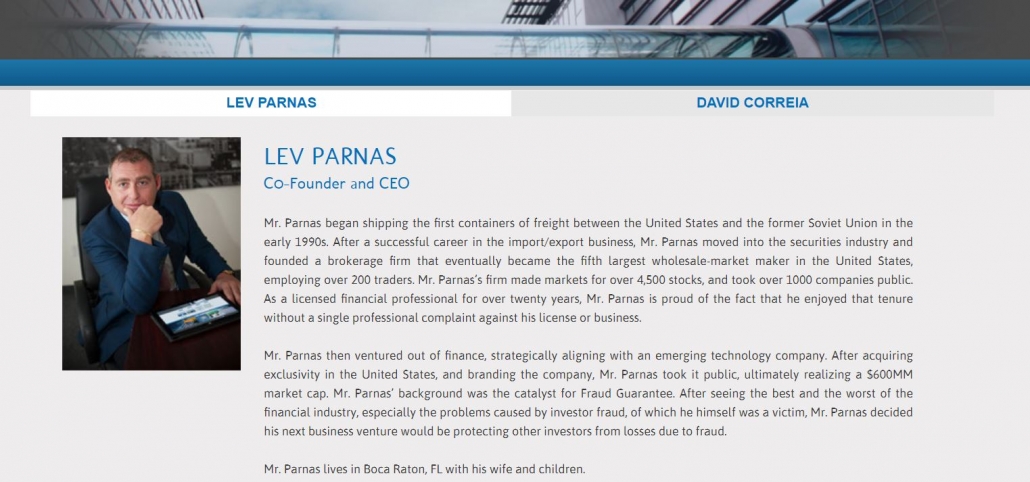
Notably, in this version Parnas says he shipped “the first containers of freight between the United States and the former Soviet Union”. The Gorbachev government failed in December of 1991, when Parnas would have been 19, going on 20 the next February. And yet, somehow, this teenager, who had a couple of years selling real estate, suddenly jumps into the middle of a brand new opportunity on the world scene. Even more confusing is the fact that the former Soviet Union in those early years had a horrible economy:
The first seven years of Russia’s transition from the Soviet central planned economy (1991-1998) were not easy. This [period, which coincided with most of the regime of President Boris Yeltsin were, by most accounts, a time of economic chaos, if not near collapse and failure.
During the period, Russia lost close to 30% of its real gross domestic product (GDP), a decline reminiscent of the Great Depression of the 1930s in the United States.4 Russia also suffered very high rates of inflation– over 2,000% in 1992 and over 800% in 1993– before it declined to more tolerable, but still high, levels of around 20% by the end of the 1990s. The inflation robbed Russian citizens of their savings as the value of the ruble collapsed, eventually forcing the Russian government to sharply devalue the ruble on January 1, 1998, with 1 new ruble equaling 1,000 old rubles. As a hedge against inflation, some residents, who were in a position to do so, invested in hard assets such as art works, foreign currencies, and real estate.
So what would a teenager ship? Oh, I don’t know, maybe he figured something out at a time when the rich in the former Soviet Union were looking for hard assets.
The next phase in Parnas’ career becomes really fascinating. Note that all of these narratives say he moved from shipping (or directly from real estate) to securities. Again, he seems to have had remarkable luck in jumping into a senior position at an incredibly early age. I’ve been digging into the network of Parnas’ various corporate entities (and hope to write about them soon) and the earliest entry under his name in the Florida database is for Program Trading Corp., which was incorporated on September 25, 1992 in Boca Raton. That would have made Parnas just 20 years old when he suddenly became, at least on paper, a director and President (a partner I’ll address in later posts was CEO) of a stock trading firm. The timeline here seems a bit out of order. Parnas claims not to have moved to Florida until 1995, and yet his first company there was incorporated, with him involved, in 1992. Further, when we look into Parnas’ registration as a stock broker, we see that he is listed as passing the licensing exam on December 10, 1993 and he’s first registered with a brokerage firm a few days before that on December 6. This is over a year after Program Trading Corp. was founded.
I confess to not being familiar with the detailed workings of licensing and registration of stock brokers, but the rapid succession of firms at which Parnas was registered strikes me as strange and perhaps suggestive that his early days as a broker didn’t go well. From the early firms, it appears at least possible that Parnas was indeed still in New York as he passed the first exam and sold his first securities, but it still stands out as strange that his firm in Florida was already incorporated and waiting for him when he moved there in 1995.
It’s almost as if Lev Parnas was a “made man” at 23 with experience in real estate, shipping and securities, all enterprises known to be favored by those laundering cash coming out of the former Soviet Union.
Update October 17
It appears that Parnas didn’t actually become involved in Program Trading Corp. until late 1998. I’ve put strikethrough on the parts of this post that relied on a mistaken interpretation of the forms on file with the State of Florida. See the new post for an updated timeline of Parnas and Program Trading Corp. So Parnas may not have been “made man” until 1998 instead of 1995.

